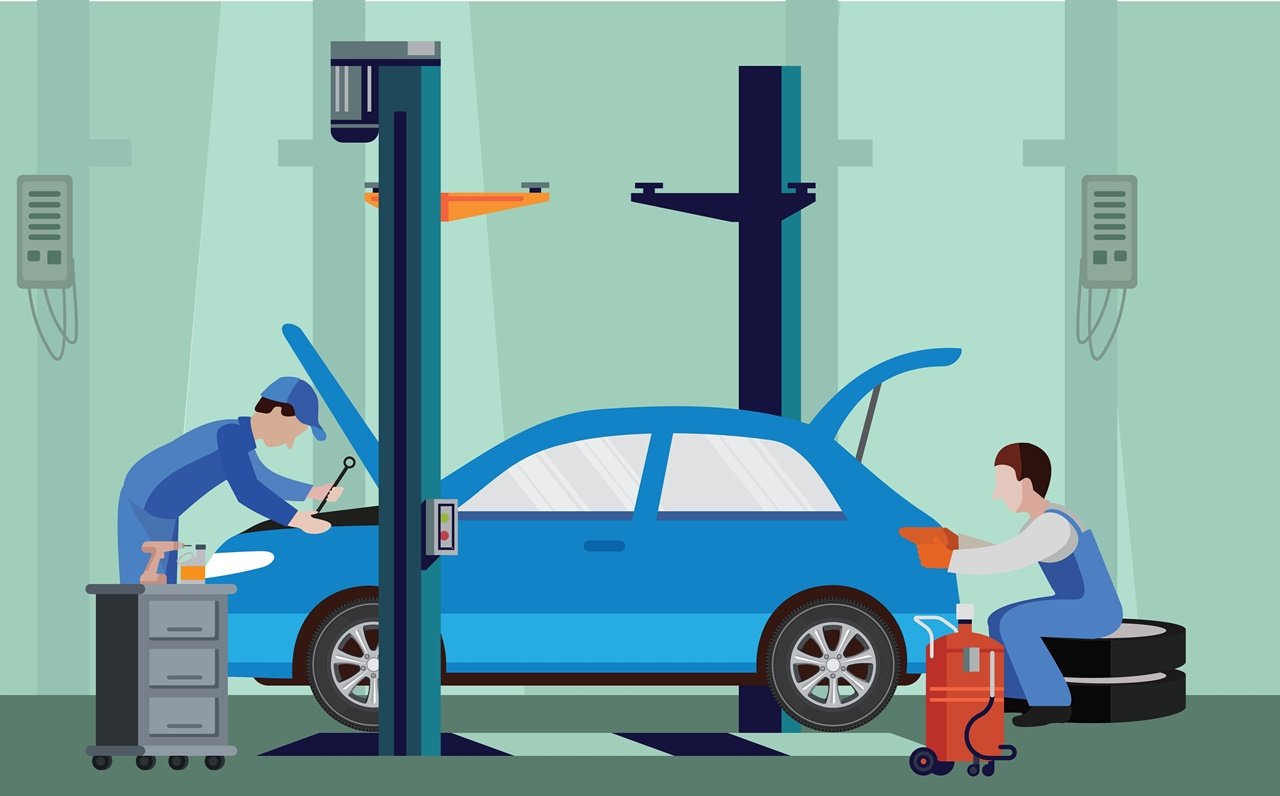Automotive
Mastering the Road: A Comprehensive Self-Service Guide for Basic Auto Maintenance

First of all,
It is your duty as a driver to maintain your vehicle in excellent condition to guarantee a smooth and safe travel. A mechanical engineering degree is not necessary for basic auto maintenance; in fact, you can save time and money by doing many of the duties yourself. We’ll cover a variety of easily manageable fundamental automobile maintenance topics in this tutorial, enabling you to become a more knowledgeable and capable car owner or a good driver.
Oil Change: Your Engine’s Heartbeat
The Value of Regular Oil Changes: Maintaining the smooth operation of your engine depends on regular oil changes. According to an old proverb, “Oil is the lifeblood of your engine.” It aids in heat dissipation, lubricates moving parts, and lowers friction. It’s important to heed the manufacturer’s instructions for how often to change your car’s oil.
DIY Oil Change: You might be surprised to learn how easy it is to perform an oil change. Acquire the required equipment: a socket set, an oil drain pan, and an oil filter wrench. Raise the vehicle, remove the old oil, swap out the filter, and add fresh oil according to the recommendation. By doing this easy task, you may increase fuel efficiency and prolong the life of your engine.
Expert Advice: “Changing your car’s oil is similar to giving it a hot cup of coffee.” It starts the engine and maintains smooth operation.” – Car-Aficionado Knowledge
Tyre Care: Where the Tyre and the Road Meet:
Check Tyre Pressure: Both safety and fuel economy depend on having the right amount of tyre pressure. Tyres that are underinflated might cause poor handling and worse fuel usage. To ensure that your tyres are properly inflated and checked for pressure on a regular basis, use a tyre pressure gauge.
Tyre rotation: Different driving circumstances can result in uneven tyre wear. By rotating your tyres on a regular basis, you can prolong their lifespan and ensure even wear. Observe the rotation pattern instructions made by the manufacturer of your vehicle.
Do It Yourself Tyre Changes: Every driver needs to know how to change a tyre. Make sure your automobile has a lug wrench, a jack, and a spare tyre. When you have a flat tyre, you should carefully stop, jack up the vehicle, take off the lug nuts, put the tyre back on, and then tighten the nuts in a star pattern. It’s an easy chore that can prevent you from becoming lost.
Pro Tip: “The shoes of your car are its tyres.” Your automobile will glide easily down the road if you keep them properly inflated and rotate them on a regular basis.” – Tyre Care Guidance
Safe Stopping Through Brake Maintenance:
Brake Pad Inspection: As brake pads deteriorate over time, stopping power is reduced. Check your brake pads’ thickness on a regular basis. To avoid damaging the brake rotor, replace them right away if they are excessively thin.
Check the Brake Fluid: The force that transfers from the brake pedal to the brake components depends on the brake fluid. Make sure the brake fluid level is within the prescribed range by checking it on a regular basis. Fill it with the recommended brake fluid if it’s low.
DIY Brake Pad Replacement: For the do-it-yourself enthusiast, replacing brake pads is a bit more complicated but still doable. Lift the vehicle, take off the wheel, loosen the calliper, swap out the old pads, and put it back together. When working with the brake system, don’t forget to take safety precautions and according to the manufacturer’s instructions.
Pro Tip: “Brakes are for preventing unpleasant surprises, not merely for stopping. Maintain them well for a safer journey.” – Brake Upkeep Guidance
Battery Maintenance – Energising Your Travels:
Battery Inspection: Frequently check your battery for damage, leakage, or corrosion. Make sure the terminals are secure and use a battery brush to clean off any corrosion. Although modern batteries don’t require maintenance, it’s still important to keep an eye on them.
Do It Yourself Jump Start: You can avoid needing to call for help if you know how to jump-start your car. In your trunk, have a set of jumper cables. Once the positive and negative terminals of each battery have been connected, start the car with the functioning battery first, and then the one with the dead battery.
TIP: “A well-maintained battery is like a reliable friend – it keeps you going when you need it the most.” – Battery Maintenance Advice
Fluid Inspections: Maintaining Proper Car Hydration
Check Your Engine’s Coolant Level: Engine coolant keeps your engine from overheating. Check the coolant level frequently and top it off if needed. Do not forget to add coolant only after the engine has cooled.
Windscreen Washer Fluid: Safe driving requires good visibility. Make sure you have enough windscreen washer fluid, especially if you’re travelling a distance. It’s a short and simple procedure that guarantees a road view.
Power Steering Fluid: As specified by the manufacturer, check the level of power steering fluid in your vehicle. Low levels may make steering challenging. Use the suggested fluid to top off as needed.
Pro Tip: “Your car’s fluids are its unsung heroes. Your car will appreciate you for maintaining them at the proper levels with smooth operation.” – Knowledge of Fluid Maintenance
Change Air Filter – Breathe Easily:
A clean air filter is essential because it keeps dirt and debris out of the engine. Both horsepower and fuel economy might be decreased by a clogged filter. Regularly inspect your air filter and replace it if necessary.
Replace your air filter yourself by finding the housing, taking out the old filter, and installing a new one. It’s an easy task that can increase the performance and fuel efficiency of your vehicle.
Pro Tip: “Consider the air filter as the lungs of your vehicle. Your car will breathe easier on the open road if you keep them clean.” – Wisdom of Air Filters
In conclusion, learning the fundamentals of car maintenance will improve your driving experience while also saving you money. You become a more responsible and self-assured automobile owner by taking charge of basic maintenance chores like air filter replacements, battery checks, tyre rotations, brake care and oil changes. Recall that a well-kept car is a trustworthy friend on life’s journey as well as a means of transportation. Your car will appreciate you for taking the time to do some DIY auto repair, so gather your equipment, roll up your sleeves, and get started. Happy travels!
-

 Tech12 months ago
Tech12 months agoHow to Use a Temporary Number for WhatsApp
-

 Business2 years ago
Business2 years agoSepatuindonesia.com | Best Online Store in Indonesia
-

 Social Media1 year ago
Social Media1 year agoThe Best Methods to Download TikTok Videos Using SnapTik
-

 Technology1 year ago
Technology1 year agoTop High Paying Affiliate Programs
-

 Tech7 months ago
Tech7 months agoUnderstanding thejavasea.me Leaks Aio-TLP: A Comprehensive Guide
-

 Instagram3 years ago
Instagram3 years agoFree Instagram Auto Follower Without Login
-

 Instagram3 years ago
Instagram3 years agoFree Instagram Follower Without Login
-

 Technology11 months ago
Technology11 months agoLeverage Background Removal Tools to Create Eye-catching Videos



















